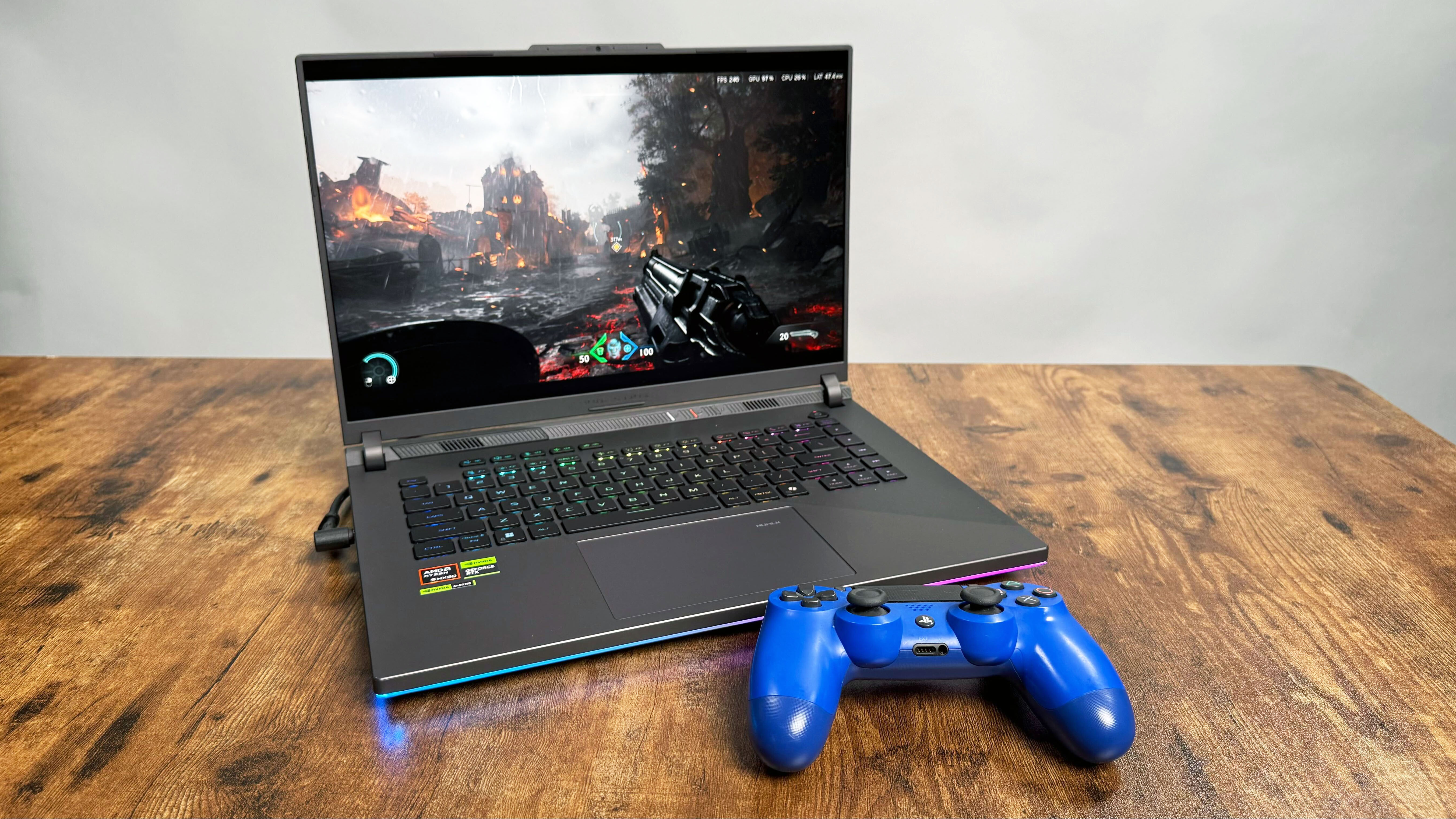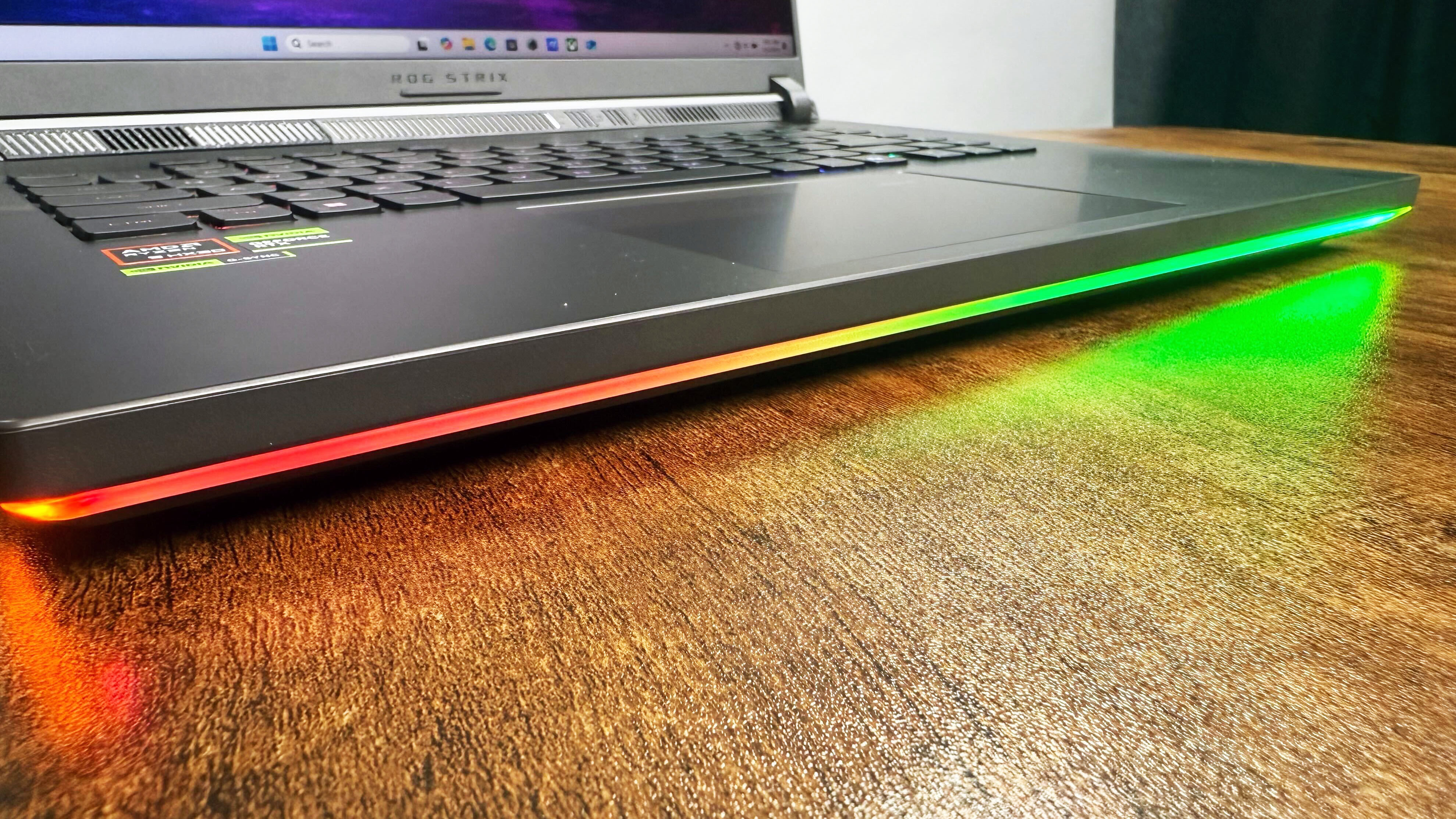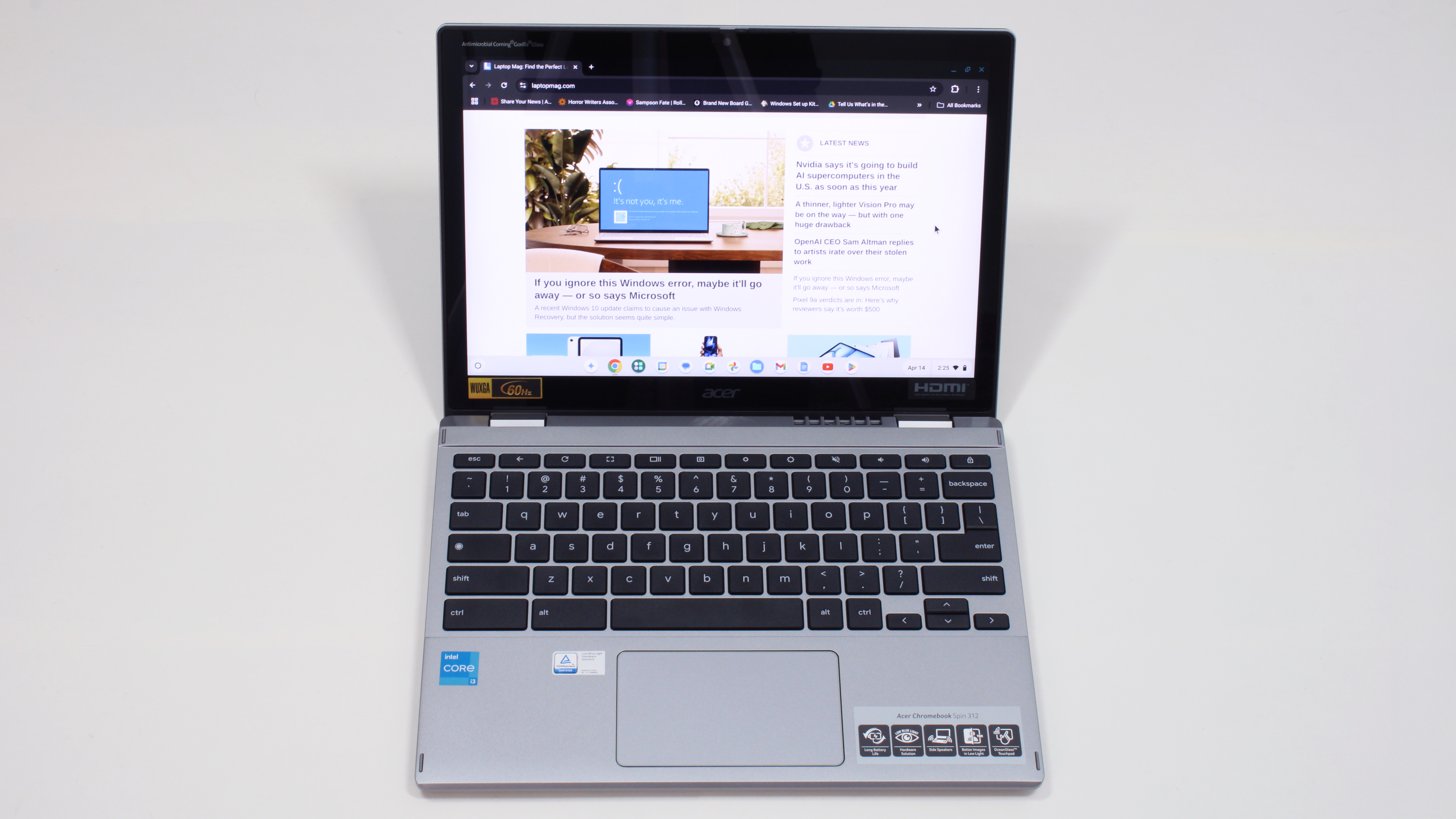AMD claims its Fire Range X3D chip is the “fastest mobile gaming processor,” so we pitted it against some of Intel’s best to find out
Does the Ryzen X3D carry an AMD Advantage for all-around performance, or is Intel the better bet?

The Asus ROG Strix G16 (G614) is our first system featuring the AMD Ryzen 9 9955HX3D “Fire Range” processor, which presents a perfect opportunity for some benchmark face-offs.
AMD claims it is the “fastest mobile gaming processor,” but is that strictly true? I turned to our lab test results for some recent gaming laptops to find out.
One caveat before I dig into the results: unfortunately, the ROG Strix G16 tops out at an Nvidia RTX 5070Ti Laptop GPU. It's a solid choice for price and performance when shopping for one of the best gaming laptops, but it means we don’t have a 1:1 competitor for gaming performance.
All of the RTX 50-series gaming laptops we’ve reviewed in this generation have come with RTX 5080 or 5090 GPUs. The Strix G16 is the first laptop we’ve reviewed with a Ryzen 9 X3D CPU or an RTX 5070Ti GPU.
This means I can only accurately compare the Ryzen 9 9955HX3D to the Intel Core Ultra 9 on general performance and battery life. Those tests won’t get the most benefit from the Ryzen 9’s 3D cache.
All that aside, if you’re going to use your gaming laptop for more than just gaming, do you want AMD or Intel inside?
AMD Ryzen 9 9955HX3D: Performance

If your main use for your laptop is gaming, it may be worth opting for the Ryzen 9 9955HX3D instead.
To keep things as even as possible, we compared the Asus ROG Strix G16’s Ryzen 9 9955HX3D to the MSI Raider 18HX AI’s Intel Core Ultra 9 285HX and the Gigabyte Aorus Master 16’s Intel Core Ultra 9 275HX.
Sign up to receive The Snapshot, a free special dispatch from Laptop Mag, in your inbox.
When we compared Intel’s Arrow Lake HX systems to other CPUs of this generation, we hadn’t yet tested any AMD Fire Range systems. Now that we have the Strix G16, does Intel hold onto its performance lead?
The answer is complicated, as Intel’s two CPUs outperform their counterparts in multicore performance, video conversion, and overall performance in the Crossmark suite. However, AMD’s Fire Range 9955HX3D has the strongest single-core performance.
Specific use cases benefit from stronger single-core performance. Some Photoshop filters, specific video editing tasks, and some older games are optimized for single-core performance over multicore. However, most modern uses, including modern games, are multicore workloads.
If your main use for your laptop is gaming, it may be worth opting for the Ryzen 9 9955HX3D instead. You’ll have slightly better single-core performance for older titles while still having competitive multicore performance, and you’ll get the 3D cache benefits for newer games.
But if you're going to use your gaming laptop as your daily driver, Intel’s CPUs are faster all around. After all, it's not like either Core Ultra 9 processor is a slouch at single-core performance.
Click to view chart data in table format
| Header Cell - Column 0 | Asus ROG Strix G16 (AMD Ryzen 9 9955HX3D) | MSI Raider 18 HX AI (Intel Core Ultra 9 285HX) | Gigabyte Aorus Master 16 (Intel Core Ultra 9 275HX) |
|---|---|---|---|
Geekbench 6: Single-core (Higher is better) | 3,205 | 3,032 | 3,049 |
Geekbench 6: Multicore (Higher is better) | 20,113 | 21,851 | 19,175 |
Handbrake conversion (Lower is better) | 2:17 | 02:07 | 2:18 |
Crossmark (Overall, Higher is better) | 2,195 | 2,256 | 2,251 |
AMD Ryzen 9 9955HX3D: Battery life

The GPU can impact battery life. After all, the power consumption of the Nvidia RTX 5070 Ti can be lower than that of the RTX 5080. The 5070Ti requires a subsystem power of 60-115 watts, while the 5080 is an 80-150-watt GPU. So, these comparisons aren’t the ideal showcase of the Ryzen 9 9955HX3D compared to its Intel Arrow Lake counterparts.
Though, if anything, that makes the Strix G16’s battery life look worse.
After all, the Gigabyte Aorus Master 16 features the power-hungry RTX 5080 but gets about 27 minutes more battery life than the Strix G16. Both Intel-powered gaming laptops last longer on battery life while running the PCMark 10 Gaming Battery Life test.
Click to view chart data in table format
| Header Cell - Column 0 | Asus ROG Strix G16 (AMD Ryzen 9 9955HX3D) | MSI Raider 18 HX AI (Intel Core Ultra 9 285HX) | Gigabyte Aorus Master 16 (Intel Core Ultra 9 275HX) |
|---|---|---|---|
Battery life (Higher is better) | 05:22 | 02:33 | 05:49 |
PCMark 10 Gaming Battery life (higher is better) | 01:22 | 01:46 | 01:40 |
Bottom line

But for gaming, it may still be worth choosing an AMD-powered system.
Thanks to AMD’s proprietary 3D CPU caching, you can often get quality performance out of the Ryzen 7 compared to the Ryzen 9. And, at least on desktop, the Ryzen 7 X3D is the top gaming CPU this generation.
Once we get an Intel Core Ultra 9 system with an Nvidia RTX 5070Ti or a Ryzen 9 X3D unit with an RTX 5080 or 5090, we’ll be able to make some gaming comparisons to really see if Fire Range’s 3D cache is worth it on a laptop.
For now, in terms of general performance and battery life, things can vary a lot by OEM implementation. However, Intel has a lead on multicore performance, while AMD has it beat on single-thread.
So, if you’re looking to use your gaming laptop for general use, content creation, or deep data analysis, it’s worth opting for Intel’s Arrow Lake chipset over AMD’s Fire Range. But for gaming, it may still be worth choosing an AMD-powered system.
We’d love to compare Intel’s Arrow Lake HX chipset against AMD’s Fire Range X3D in the same laptop with the exact same GPU. While there is a version of the Asus ROG Strix G16 with an Intel CPU, we haven’t received it yet.
We’ve done our best to compare the two chips, but as always, there is a lot of variation in benchmarks depending on how the chip is implemented into a laptop by the manufacturer. We look forward to a more direct head-to-head later this year, which just might give more weight to AMD’s claims of superiority.
More from Laptop Mag
- Nvidia's N1X Geekbench scores are impressive, but can they top AMD and Intel? We compared the results.
- Should the new Maingear Ultima 18 laptop replace your gaming desktop? Just look at the specs.
- Microsoft's clever new tool gives Windows laptops a surprise battery boost

A former lab gremlin for Tom's Guide, Laptop Mag, Tom's Hardware, and TechRadar; Madeline has escaped the labs to join Laptop Mag as a Staff Writer. With over a decade of experience writing about tech and gaming, she may actually know a thing or two. Sometimes. When she isn't writing about the latest laptops and AI software, Madeline likes to throw herself into the ocean as a PADI scuba diving instructor and underwater photography enthusiast.
